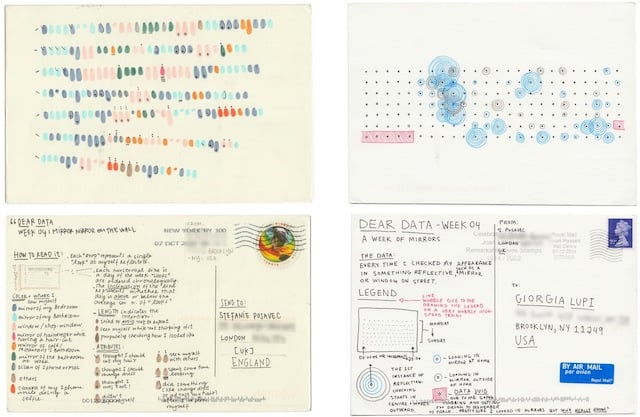Two women leading parallel lives are getting to know each other through data

Giorgia Lupi, who lives in New York, and Stefanie Posavec, who lives in London, are engaged in a long-distance, postcard-based data exchange in order to get to know each other better: “Dear Data.” They’ve only met in person twice, and they’re both interested in data, so they’re sending each other postcard drawings of data about their day-to-day lives.
Each week we collect and measure a particular type of data about our lives, use this data to make a drawing on a postcard-sized sheet of paper, and then drop the postcard in an English “postbox” (Stefanie) or an American “mailbox” (Giorgia)!
Eventually, the postcard arrives at the other person’s address with all the scuff marks of its journey over the ocean: a type of “slow data” transmission.
By creating and sending the data visualizations using analogue instead of digital means, we are really just doing what artists have done for ages, which is sketch and try to capture the essence of the life happening around them. However, as we are sketching life in the modern digital age, life also includes everything that is counted, computed, and measured.
We are trying to capture the life unfolding around us, but instead we are capturing this life through sketching the hidden patterns found within our data.
The data appears on the front of the postcard, and a key explaining how to read the data appears on the back of the postcard. (via Coudal)





Stay Connected